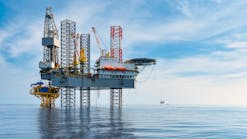Global OTEC has unveiled its OTEC Power Module for offshore energy exploration and production at the 1st Brazilian Workshop on Geothermal Energy Utilization and Storage in Rio de Janeiro.
The system uses the Ocean Thermal Energy Conversion (OTEC) technology to power remote offshore platforms and wells, and it is designed to provide an alternative to traditional long subsea tiebacks.
The power module is engineered to deliver clean baseload electricity and flow assurance services without the need for cables and hydraulics, which typically restrict reach to 35 km.
According to Global OTEC, the power module could cut deepwater long subsea tieback capex by 20-30%, while also bringing improvements in operational efficiency and reduced CO2 and methane emissions.
“This technology opens up new possibilities for offshore field development, especially in locations where conventional energy supply is costly or logistically challenging,” said Yann Helle, group managing director at 2H, global partner in the OTEC platform's riser development.
The module employs an Organic Rankine Cycle to harness the ocean's natural temperature gradient by drawing on warm surface seawater and cold deep water. This is said to enable the system to generate continuous, clean electricity at all times throughout the year.
Each power module can provide up to 500 kW of installed capacity, and they are each equipped with safety and control systems to support local and remote operation.
“Our team has developed the OTEC Power Module as an uncrewed solution to integrate with existing offshore systems, ensuring stability and efficiency,” added Sam Johnston, lead engineer at Global OTEC.
Recently, the company established a new base in Houston.
“Our technology adds value and efficiency to offshore oil and gas operations, providing a scalable, cost-effective energy solution that enhances field economics,” added Dan Grech, founder and CEO of Global OTEC. “This pathway is essential for unlocking larger scale OTEC projects that will be capable of replacing gas and diesel turbines upon FPSOs."









